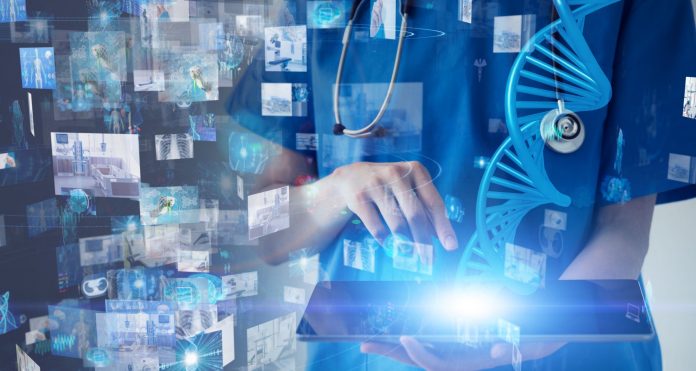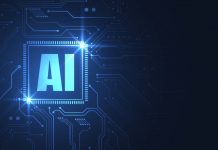This article is written by Sankara Narayanan, pursuing Diploma in US Technology Law and Paralegal Studies: Structuring, Contracts, Compliance, Disputes and Policy Advocacy from LawSikho. The article has been edited by Zigishu Singh (Associate, LawSikho).
Table of Contents
Introduction
Robotics have been in use in the health industry to assist physicians for over four decades and have proven to be effective in undertaking repetitive tasks. The use of robotics in the medical field has many advantages including precision work, accuracy, patient care, and handling other services. The robot mainly carries out the work through the complex hardware for specific jobs. Some robots may resemble a human and we may call them humanoid. Robots act as a tool in the hands of a doctor. Therefore, any failure in the procedure is the responsibility of the doctor. Artificial Intelligence (AI) enabled systems are now used in many industries and can take autonomous decisions just like human beings. With AI being written in machine learning language, it becomes easy for the coders to develop AI to solve complex issues. AI has many applications in the health industry as it can carry out diagnostics, analytics, prescriptions, and even diagnose rare medical conditions that physicians may miss out on. AI systems can analyze the data, interpret, compare, and make predictive outcomes immediately, as opposed to human decisions. AI often works as an autonomous system without any human interference. When an AI system is used autonomously there arises a question of responsibility for any failure. The current regulations in many countries including the US are not sufficient to address such issues. Many countries including the European Union (EU) and the US are in the process of formulating a comprehensive regulatory framework for controlling the use of AI including the health industry.
Robotics in the health industry
Robotics is the use of machines using computers and other hardware that can be programmed to perform certain repetitive or routine functions and have been used widely in food processing, industrial manufacturing, remote operations, fire, and rescue operation, the health industry, etc. Robots are used in hospitals for cleanroom preparation, assisting paramedics and doctors to help them reduce their workload. Robots played an important role in the covid-19 pandemic to reduce direct contact with the patient to health care workers. Robots can also safely handle poisonous and hazardous materials that humans may not be capable of handling.
Advantages of robotics in the health industry
Robotics has wider applications in the healthcare industry. Robotic surgery has been in practice for over two decades and has assisted surgeons in carrying out precise surgery. A robot is a machine that can be programmed to follow the surgeon’s instructions and carry out medical procedures. The use of Robotic in the healthcare industry includes conducting surgeries that save human efforts. Robots can perform pre-operation procedures such as cleaning the operating room, sterilization of equipment and can perform keyhole surgeries with high precision with the instruction of a surgeon. The robot acts as an aid to the doctor and the doctor is liable for any fault in the procedure even when it is carried out by the robot. The main advantages of using robotics in the health industry are:
- Accuracy and precision – Human error can be eliminated as the machines can work tirelessly for a long time.
- Remote treatment – Robots can work in remote areas where human access is limited and can be controlled remotely.
- Assisting and augmenting human capabilities – Robots can prepare the cleanroom, handle hazardous materials, help doctors to conduct surgery, and even conduct surgeries autonomously.
- Patient support – Robots can be in the form to resemble a human being and help elderly and bedridden patients to interact with them.
- Assisting other resources – Robots can also be used to carry out other works such as record keeping, retrieving data, and handling other routine works to help other staff.
The main disadvantage is a mechanical failure, lack of human compassion as well as the fact that technology is getting updated constantly. Despite all the disadvantages, the use of robotics is inevitable in the health industry. Generally, if there is a failure in the surgery where robotics assistance is sought by the doctor, he is liable for any claims by the patients.
Artificial Intelligence
AI mostly comprises software that uses algorithms and can work autonomously in carrying out its functions and decisions as AI has the power of near-human intelligence. An AI system is driven by software, coupled with necessary hardware designed by humans to accomplish a given complex goal, to act in physical or digital dimension by perceiving their environment through data acquisition, analysis, interpreting the collected structured or unstructured data, providing reasoning on the knowledge, or processing the information, derived from the set of data, and deciding the best action to obtain the desired goal without any human interference.
From the traditional ‘chatbot’ where AI can guide customers and answer their questions, AI can now carry out diagnostics and prescriptions and the latest AI is coded on ML algorithms with the AI trained on the vast databases that have been saved. Scanning through the records and comparing the data is very time-consuming, but AI can compare medical conditions with records and find solutions more efficiently. Such data with the help of advanced algorithms help the AI in taking decisions close to that of human minds without the need for any commands. Some of the latest AI machines resemble human beings and are called ‘humanoid’. This has many applications of AI in the health industry.
AI uses codes written in Python or other languages like R etc. but the latest AI utilizes Machine Learning (ML). There is no doubt that advanced technology has contributed to the expanded life span of human beings all over the world. AI has been widely used to improve patient care, but it also raises concerns on many issues such as personal data protection and privacy. Currently, there are no regulations to control AI in many countries including the US. The existing data privacy laws and industry-specific regulations cover the use of Robotics and AI but are inadequate in addressing AI-related issues. The European Union has devised a proposal in January 2021 for new AI products that are considered high risk and included the products that are to be used in the health industry. AI largely depends on data that was gathered over a period and uses data analytics to do the iteration through which the desired results are obtained.
Advantages of AI
- Autonomous function – AI systems with the right program can carry out functions of a doctor in diagnosis, prescription, and advice to patients without any direct interference by the doctor.
- Fast and precise – AI can search through expansive records and take precise decisions on any medical condition.
- Remote application – AI can be used in remote locations where human access is limited.
- Patient care – AI can decide on each patient’s cases and provide accurate patient care.
- Human interaction – AI coupled with robotics can function as a human being and can communicate in different languages as per the need.
AI has many disadvantages like data protection and responsibility issues, lack of human compassion, mechanical failure, and technological updates that keep the system in need of constant updates. But these disadvantages can be rectified with the available technology and an appropriate legal framework.
Rapid technological innovations will certainly improve the healthcare system and AI will have many applications in the healthcare industry. But AI will also seriously challenge the robustness and appropriateness of the current healthcare regulatory frameworks. These regulatory frameworks are to primarily regulate medical persons using the “practice of medicine” and medical machines that meet the FDA definition of “device.” However, neither model seems particularly sufficient for regulating machines practising medicine or the complex system of AI where man-machine relationships will develop. Additionally, healthcare AI when combined with other technologies such as big data and mobile health apps may result in more complexities and add to the deficiencies in healthcare regulatory models, particularly in data protection and privacy issues.
Robotics and AI interface
(Source: pwc)
When AI and robotics are interfaced, the system can make healthcare more efficient and reduce human efforts in taking care of the wellness of people in the society, other benefits would include the early detection of ailments that reduces healthcare cost and complications of treatment, precise diagnosis of any medical conditions, comparing records and take appropriate decision for treatment, conducting further research, and providing training for healthcare professionals at various levels.
Regulations in the US
AI, data, data analytics, AI, ML, and robotics are interconnected but their interrelationship is much more complex. While using robotics in the medical industry, the technology is a tool in the hands of the doctor who handles it, so if there is any malpractice, the doctor is responsible for the same. When AI carries out the treatment or procedure through its autonomy there arises a question as to who is responsible for the failure or malpractice; is it the doctor who does not have much control over AI or is it the person who wrote the codes or is it the manufacture of the hardware. There must be precise regulations to deal with AI-related issues.
The foundations for the safety regulation of healthcare in the US are controlled by two entities, the state medical practice acts, and the federal laws which require the approval and surveillance of drugs and devices. As AI is getting prominence in every field and to mitigate the legal issues US authorities are starting to frame the regulatory framework. The US Food and Drug Administration (FDA) and the Department of Health and Human Services (HHS) have started to formulate guidelines on the use of AI in the healthcare industry. FDA has defined AI-based software as a medical device (AISAMD) as “intended to treat, diagnose, cure, mitigate or prevent disease”.
Conclusion
The use of robotics in the healthcare industry has many advantages and is within the purview of current regulations as robotics is a tool to assist health workers and doctors. AI can perform like a human and often makes autonomous decisions without any human interference. Currently, there are no regulations to control the use of AI as it is still a developing technology. When AI is used in healthcare where data is the heart of the system, it can be misused. Liability for any legal damages to patients related to privacy, operational failure, and another plethora of claims may arise soon as AI is poised to transform the healthcare industry into a different dimension. A comprehensive legal framework to regulate and control AI is imminent, particularly in the healthcare industry.
References
- https://www.pwc.com/gx/en/industries/healthcare/publications/ai-robotics-new-health/transforming-healthcare.html
- https://www.jonesday.com/en/insights/2018/01/artificial-intelligence-and-health-carekey-regulat
- https://yjolt.org/sites/default/files/21_yale_j.l._tech._special_issue_133.pdf
- https://www.roboticsbusinessreview.com/health-medical/6-ways-ai-and-robotics-are-improving-healthcare/
Students of Lawsikho courses regularly produce writing assignments and work on practical exercises as a part of their coursework and develop themselves in real-life practical skills.
LawSikho has created a telegram group for exchanging legal knowledge, referrals, and various opportunities. You can click on this link and join:
https://t.me/joinchat/L9vr7LmS9pJjYTQ9
Follow us on Instagram and subscribe to our YouTube channel for more amazing legal content.
 Serato DJ Crack 2025Serato DJ PRO Crack
Serato DJ Crack 2025Serato DJ PRO Crack











 Allow notifications
Allow notifications



